My background / preparation: - Middle-of-the-pack runner, always solo (no crew, no pacer) - Experience: started and finished four 100-mile races in 4 years prior to the race, 1 per year, 3 “flat” ones in around 24h (Berlin 100, Taubertal 100, Centurion Autumn 100), 1 alpine one in around 48h (Swiss Alps 100). Plus several smaller ultras up to 100k.
- Training: Decent. Probably in 3:45(ish)-marathon shape when starting the race (PR 3:27). Lots of time in zone 1. Lots of hours hiking and power walking with a backpack full of work and family stuff, probably around 5+ kg. - Objective: Finishing. Ideally by daylight before the fourth night, i.e. 85-ish hours. But would have been happy with 99h 59min.- Plan: reaching 100 miles (CP6 Wanlockhead) in 30-36h, sleeping at least 1h before being 40h in, reaching 120 miles (CP7 Beattock) in 45h to 50h tops, and moving forward at whatever pace for the last 40h to get the last 100 miles done.
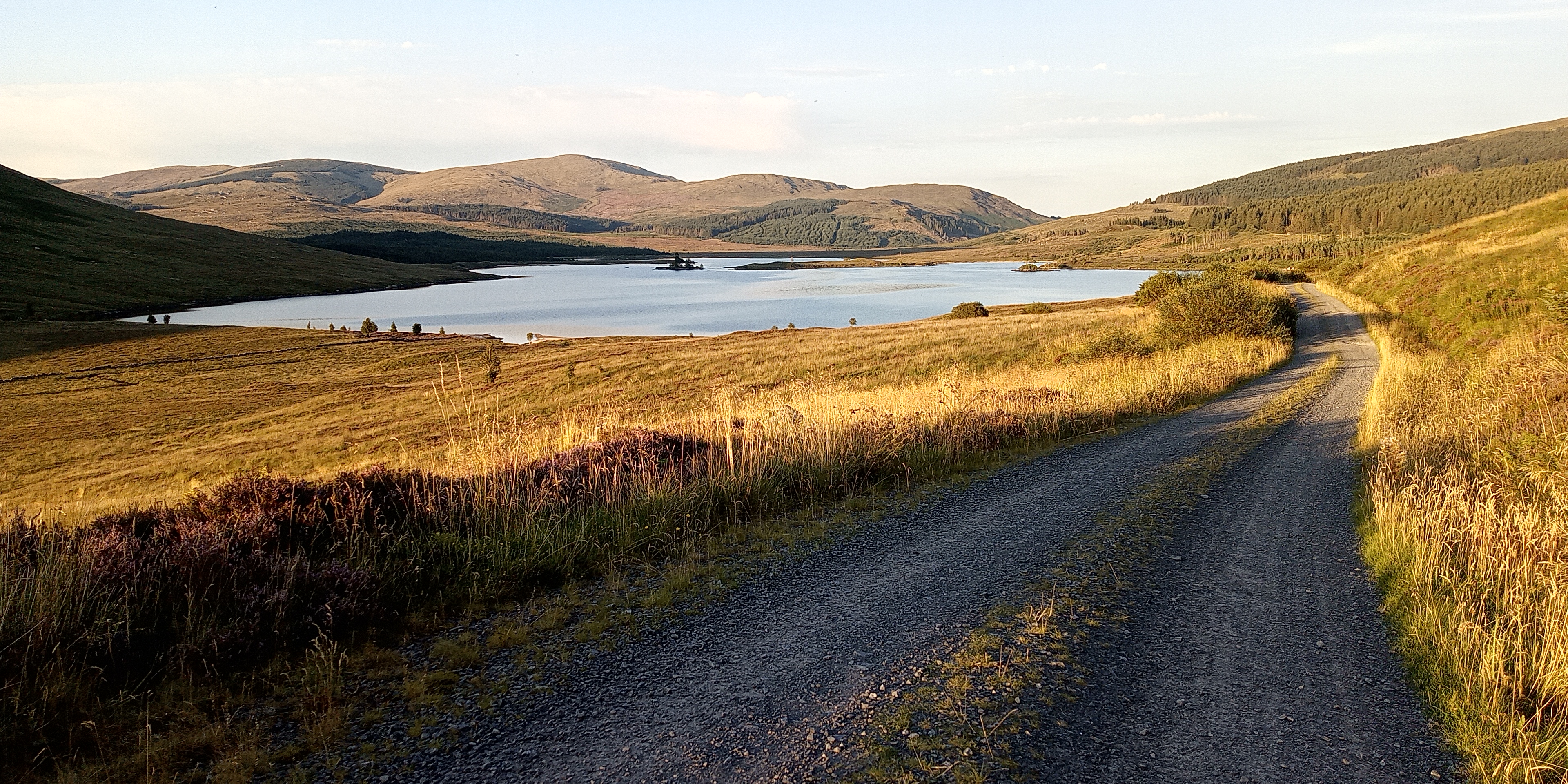
Facts about the 2022 edition:
- 42 starters, 20 finishers - 215 miles in theory, I’d say 220-230 miles in practice, watch clocked at 236 miles including wrong turns, wandering in CPs, etc
- Record drought in the weeks leading to the race. Bogs were mostly dry.
- Highest temperatures in Scotland in a long time for mid-August. Days 1,2 were at 26-27°C in the shade with no wind, which must have been 35°C or more in the sun. If the RDs had not improvised a couple Aid stations more with water, even more people would eventually have dropped. Day 3 was rainy, Day 4 was ok. - Yellow thunderstorms warning by the Met Office issued one day prior for Days 2 and 3. Thunderstorms breaking out indeed in the night from Day 2 to 3. Was playing Hide and Seek with thunder and lightning in the distance during the entire second night. Handled admirably by the RDs as far as I’m concerned
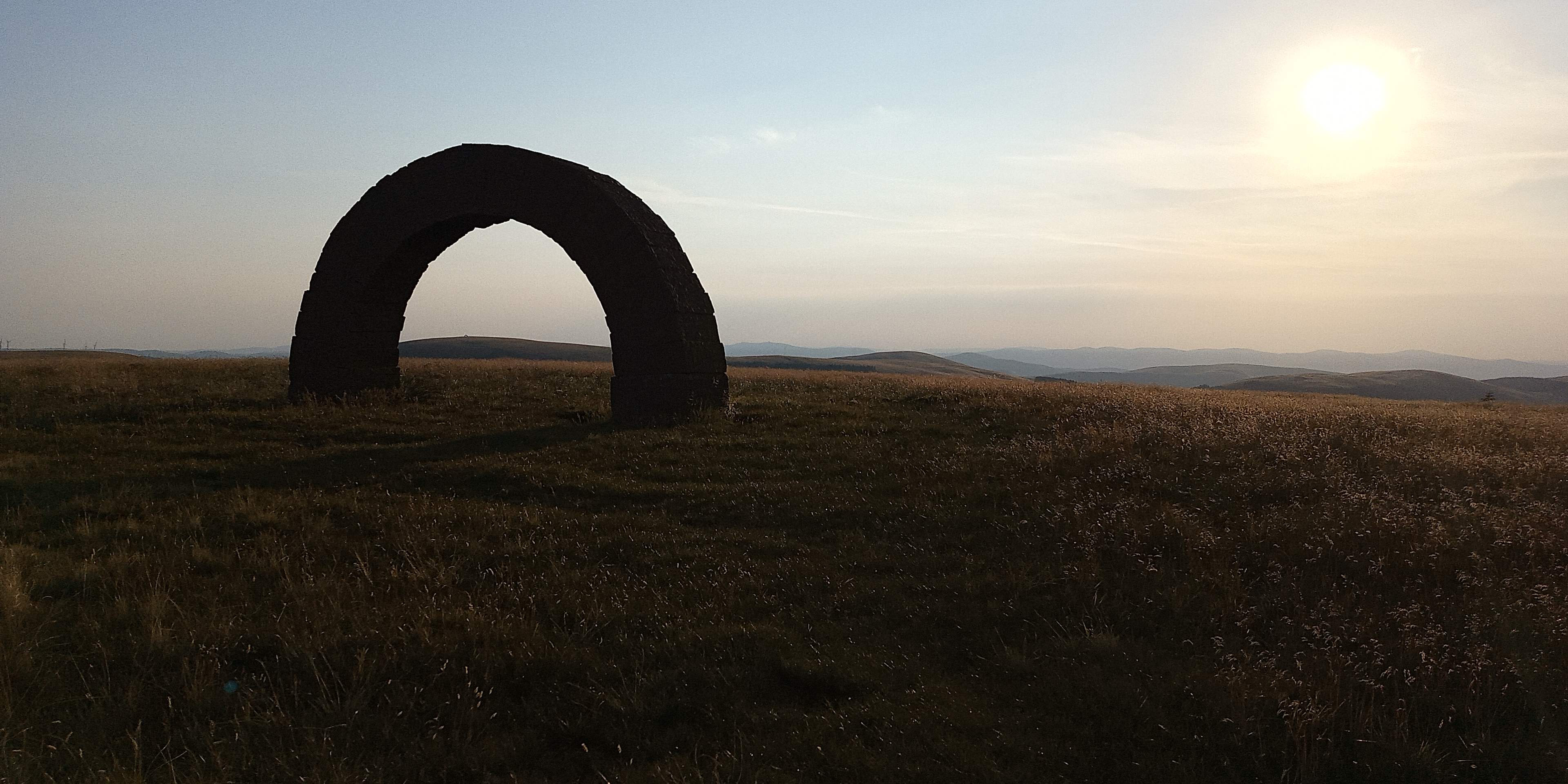
Facts about my race:
- Finished in 89h. Still able to “run” on Day 4 (not much but still). The last leg was awful indeed. I finished in the dark but was happy to finish before the deepest night.
- Being middle of the pack allowed me to have beautiful scenery on the first sunset (Loch Trool, Loch Dee), on the second morning (Benbrack Arch and viewpoint), on the second sunset (Lowther Hill Radar Station right after CP6 Wanlockhead, highest point of the course), see St Mary’s Loch during the day (see actual timing below). Had I been just a bit faster, I could have finished by daylight and actually SEE the coast and sea (at night you see nothing, which was a big anti-climax). - Slept a total amount of 3.5 hours, tops, between wake up on Saturday morning 4am and unwillingly falling asleep in the locker rooms at the finish on Wednesday morning, around 2am. That is 3.5 hours sleep in 92h, which is too little in hindsight. I slept 1h at CP6 Wanlockhead, then 45 min and an additional 25 min at CP7 Beattock, then 1h at CP9 Traquair, then in Galashiels I was so badly falling asleep while walking that I had to find a place to lie on the ground for 5-10min, then soldiered on to the finish but after a couple of hours there my body literally shut down and forced me to sleep. - Caught by thunderstorm warning and race put on hold for all runners when leaving CP7 Beattock, which “allowed” me to sleep 25min more and eat some more before the RDs let me out again. - Maybe one encounter with a cloud of midges. - Physical map was used twice because of simultaneous unclear signage and unclear GPS watch. GPX file on watch was used at least every couple of minutes, especially at night in the rain and/or fog and/or on non-existent trails (1 glance to see if the blue arrow is still on the red line is enough). - Actual timing in elapsed HH:MM from start (goal was 85:00, actual finish in 89:40): Reached CP1 Castle Kennedy in 2:50, left 2:55 Reached CP2 New Luce in 5:15, left 5:25
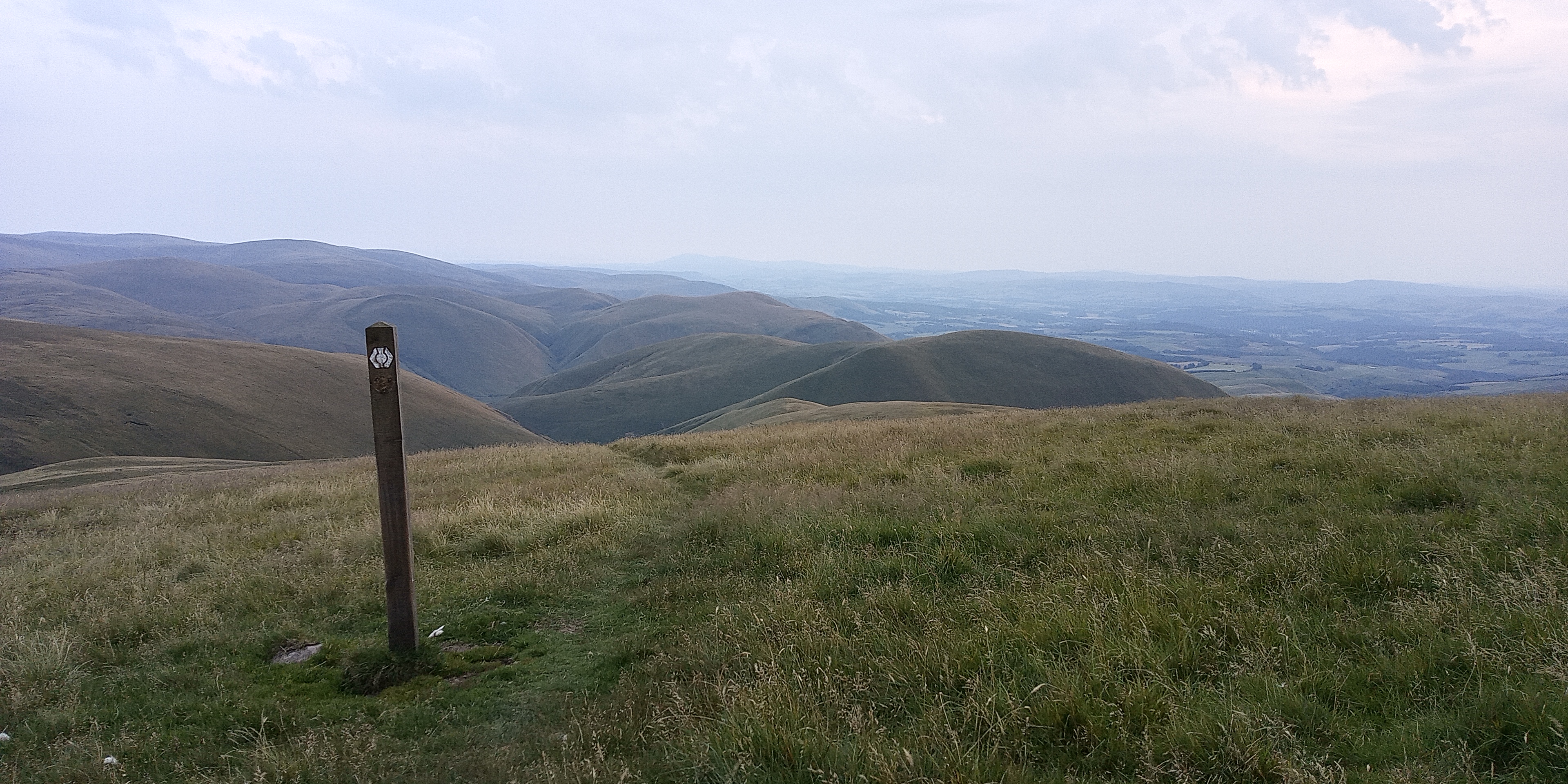
Reached CP3 Bargrennan in 10:15, left 10:45 (took a tumble, had to disinfect and fix a bloody knee) Reached CP4 St Johns Town of Dalry in 18:30, left 20:10 (tried to sleep 10-15min, did not work, had to resume eating after a pukefest between CP3 and CP4) Reached CP5 Sanquhar in 30:00, left 31:00 Reached CP6 Wanlockhead in 34:00, left 37:00 (ate consistently, showered, slept 1h like a stone). Reached CP7 Beattock in 44:40, left 47:50 (ate consistently, slept 45min unwell because of snoring, headed out but stopped by the RDs because of thunderstorms warnings, slept another 20-25min on 3 chairs arranged next to each other in a quiet corridor, ate some more, and headed out as the warning was lifted). Reached CP8 Boston Memorial (Ettrick) at 53:20, left at 54:20. Reached CP9 Traquair in 61:00, left 64:00 (dried my feet up, ate consistently, slept 1h like a stone, ate some more) Reached CP10 Fairnilee Hut in 68:00, left 69:30 Reached CP11 Lauder in 76:30, left 77:30 Reached CP12 Fishery Lodge in 81:30, left 82:00. Reached finish in 89:40. (50min were later deducted by the RDs to account for the forced stop at CP7).
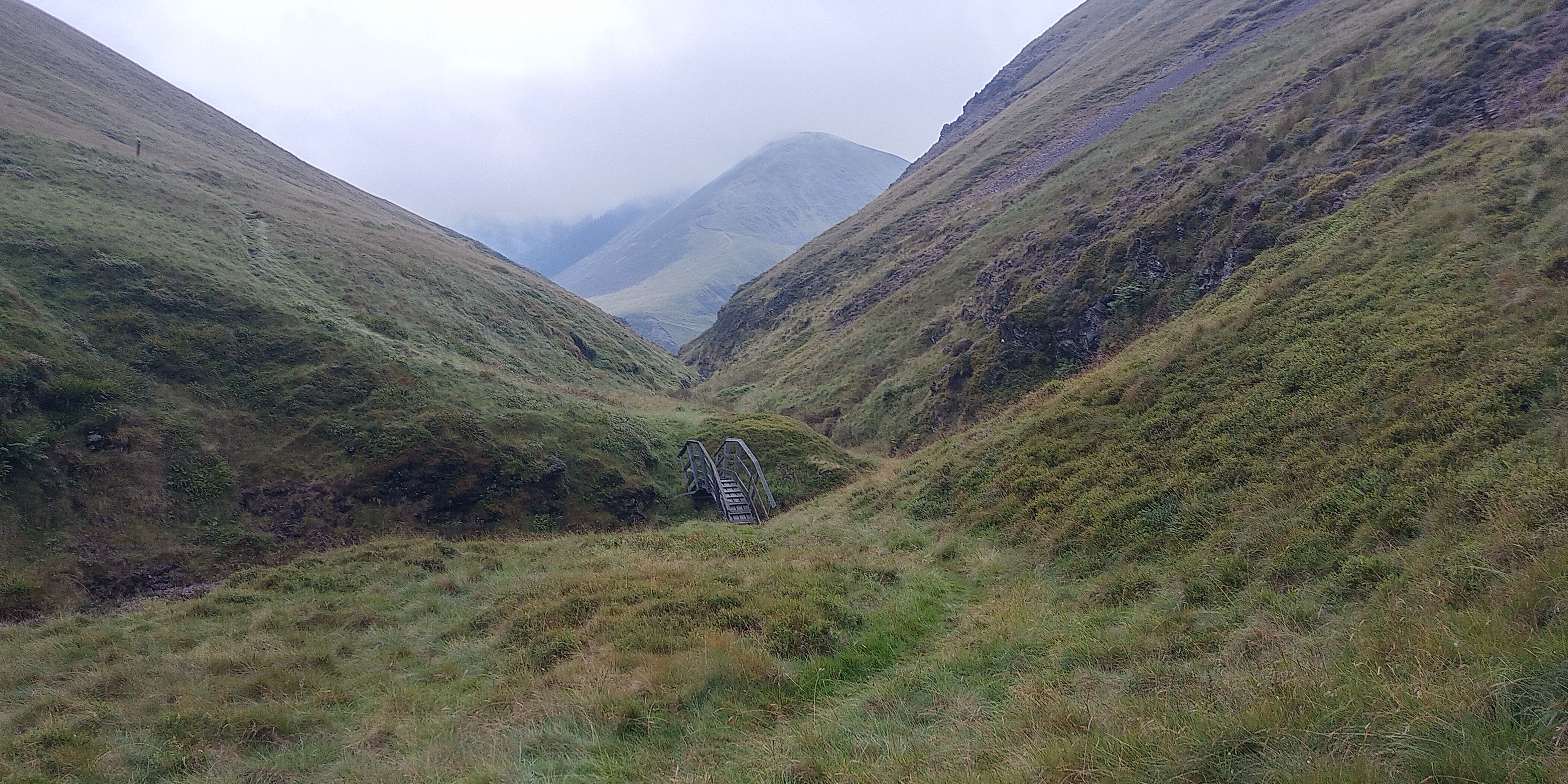
Reached sleepiness point-of-no-return in 92(ish) hours after the start as I fell asleep in the locker rooms after having showered, having almost fallen asleep 3 times already during the shower while leaning against the wall. Thanks to Ashley for waking me up.
Note about the markings:
Although the Southern Upland Way is marked by posts and signs, you still spend a decent amount of time wondering if you’re on the right track. Spotting a wooden post in the distance on a greenish/brownish background is not always easy especially when there is no trail at all, and the posts are sometimes far away from each other, or the grass and bushes are so tall everywhere around you that the post is hidden, or the post is simply broken and lying on the ground. The physical map is good, but not detailed enough to see if you’re on the right track when in the middle of an unmarked field with no apparent trail and high grass/bushes literally everywhere around you (e.g. arriving at CP5 Sanquhar). I would advise to have the GPX track on your watch AND on a handheld device (e.g. smartphone with a geolocating app) to be on the safe side.
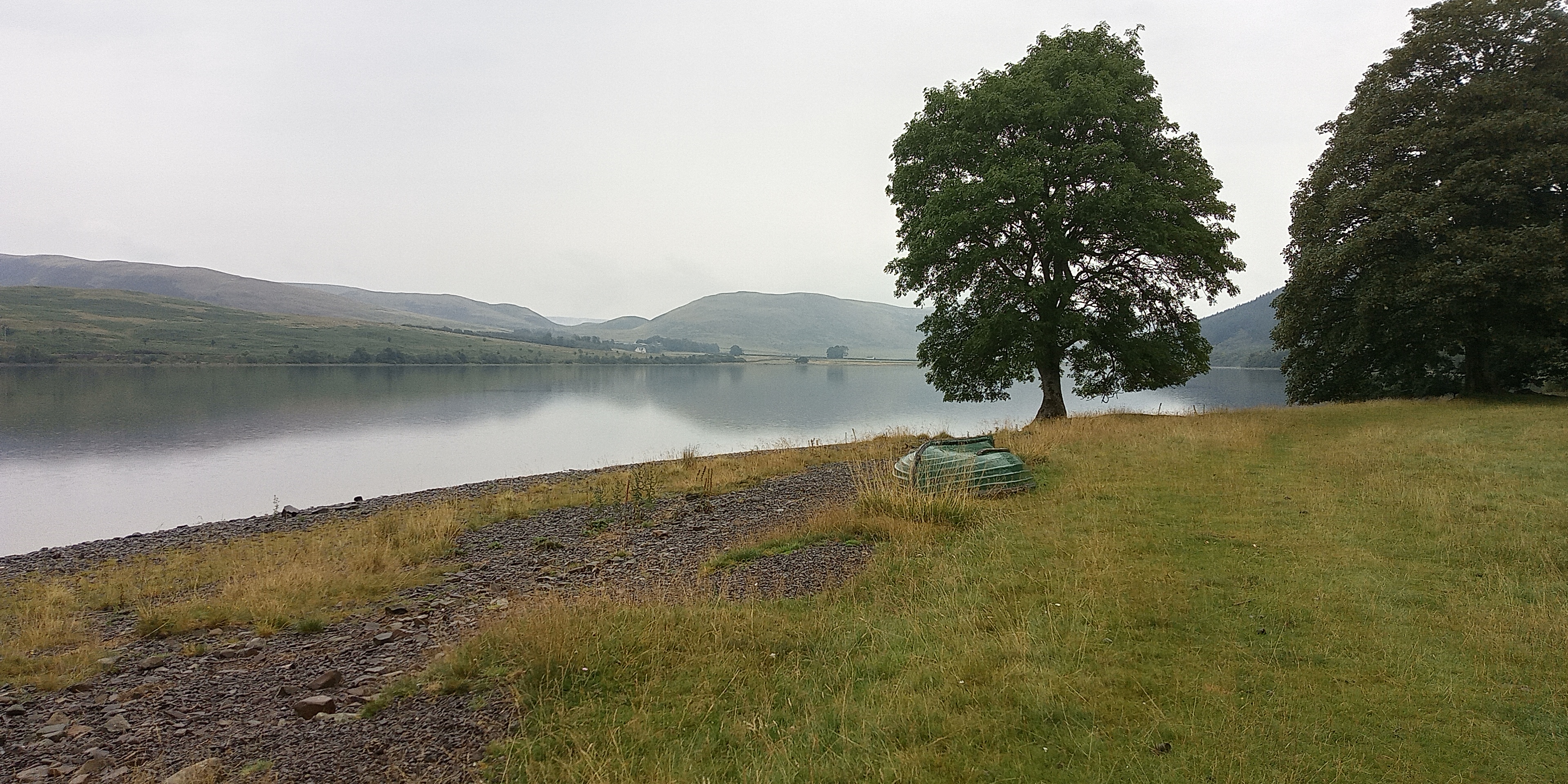
Remember: after 72h of effort with little to no sleep, everything that would seem obvious on a usual day may not be obvious AT ALL, especially at night under the rain.
What I would do again / what worked:
- Eating 2-3 servings of warm dishes + dessert at each CP from CP5 onwards kept me going and lifted my spirits at each CP. Mac & cheese of supermarket-quality becomes a 3-star Michelin experience, no kidding. I had luck that my stomach did not have problems apart from the first evening, that was probably due to the heat during the first day and lack of real warm meal up to that point.
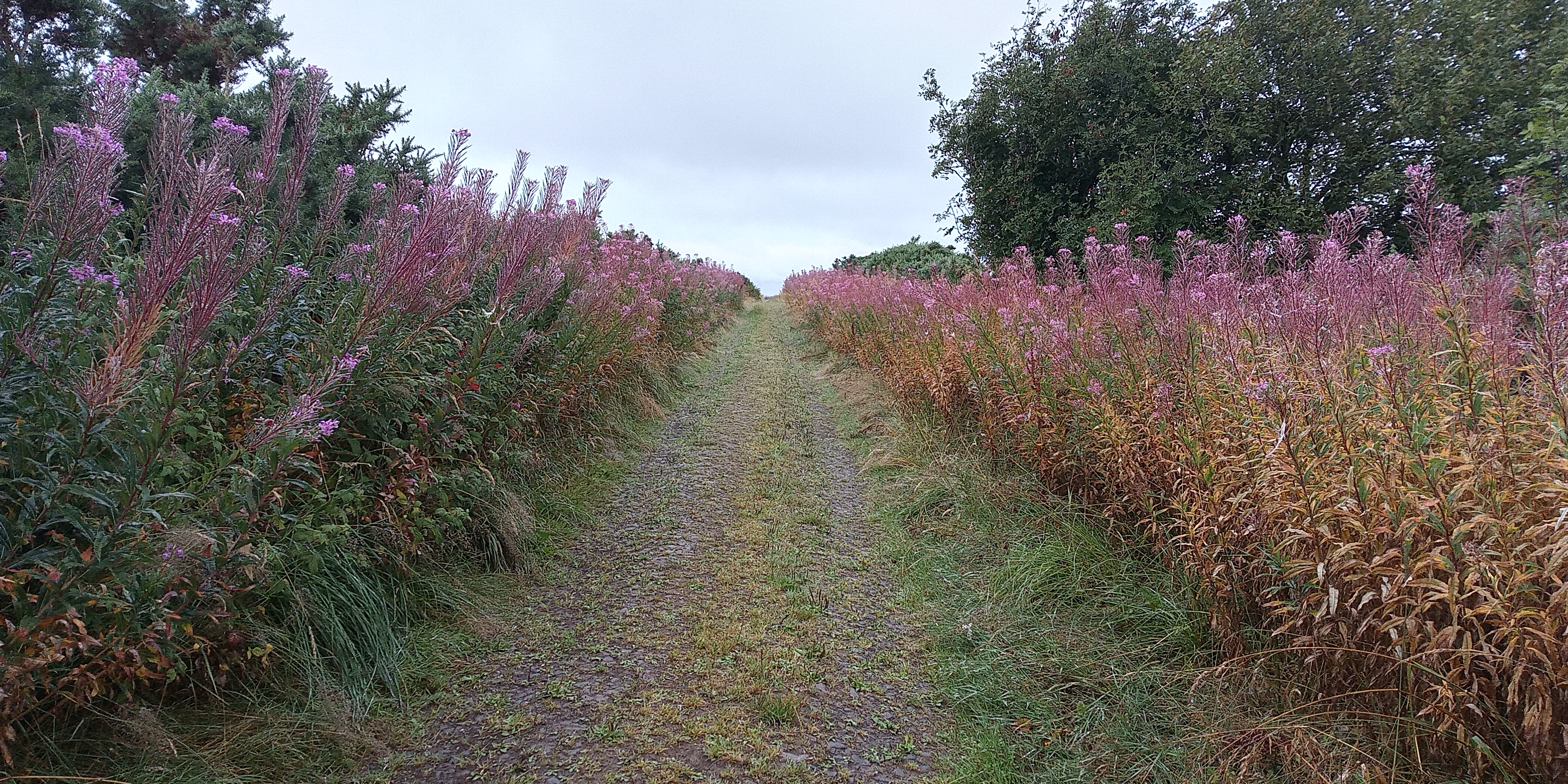
- Preparation of gear (1/2). I had no problem at all with my GPS watch and it saved my race on many occasions. Vertix 2 with standard accuracy 1s GPS, no HR monitoring but map on at all times went from 100% to 40% at the finish. I did not even have to think about it, it was great.
- Preparation of gear (2/2). Although my pack was too heavy (Ultraspire Epic XT 25L, almost fully loaded), it was very reassuring to know that I had enough water (on days 1,2) and gear (on days 3,4) on me to not be afraid of the next unaided 10h, whatever might come. My only worry was to keep moving forward.
What I would have done differently / what went wrong:
- 3 to 3.5 hours was way too little sleep. Day 4 was a struggle not to fall asleep, especially in the last hours at night. I would go for 1-1.5h sleep per 24h (in average, meaning 4-6h-ish total) if I were to run it again and if the cut-off allows it. - Deciding to do a race wardrobe change the day before the race due to unexpected high temperatures was a bad idea. At the 50k mark I began to feel my crotch being badly chaffed, and had to do 300k of damage control. - not enough training of my back, especially lower back. The backpack was relatively heavy, and over 4 days it wore me down.
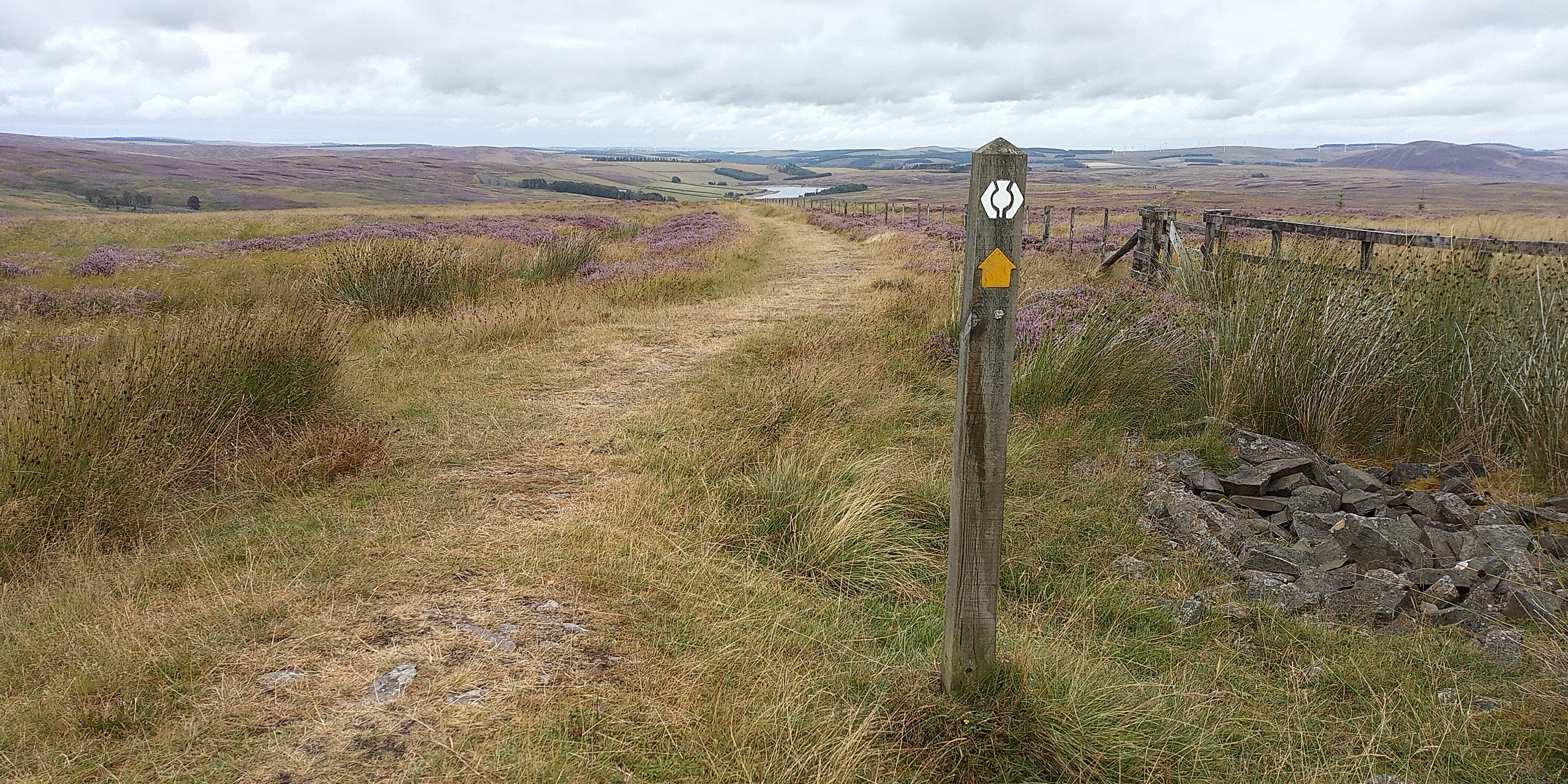
Why the Race Across Scotland is great / Why you’ll want to sign up for this race and finish it:
- It’s organised by the most dedicated, competent and friendly team of RDs and volunteers that I’ve seen on an ultra. RDs and volunteers are usually at several CPs during the race, so you’re constantly seeing people that you already saw a couple of CPs ago. The three main RDs are everywhere. No kidding, in the middle of nowhere between two hills under the rain with a sandwich waiting for you, or in the deepest night before a stretch without cover warning you from thunderstorms approaching and looking after you. Laura felt like my mom for a couple of days. I swear the RDs must have slept as little as the runners.
- It’s epic: you’re crossing a freaking landmass, for heaven’s sake. There’s something about the words “coast to coast” that is simply unique. Forget about running a totally arbitrary and meaningless 200-mile course in the middle of nowhere, or worse, running a 1-mile loop for 3 days. Here you can look at a map, point to GB and say that you’ve crossed it. On foot. In less than four days. Yeah, that’s kind of something.
- It’s varied: you’ve got small villages, at least one big city, coastal paths, river paths, hills, mountains, lochs, roads, low grass, high grass, open wide fields, deep dark forests, and more.
- It’s got the biggest heaviest most beautiful belt buckle that you will ever find. - CP4 to CP12 are indoor with all the luxury of a village hall, plus matresses to sleep comfortably (provided it’s not too busy). CP6 Wanlockhead has showers.
Why the Race Across Scotland is painful / Why people eventually DNF
- humid weather and underfoot conditions: unless it’s the year of record drought as in 2022, the weather will be humid to very humid, and the bogs will be a pain. If, in the week(s) prior to the race, the weather is very rainy, then prepare for hell. Forget about gaiters or any trick to keep water from entering your shoes. Your shoes WILL be soaked. Google “trench foot”, look at a couple of pictures to see what to expect in case you mess it up, and be accordingly prepared.
- lack of aid / loneliness & boredom: 12 Checkpoints over 215 miles that turn out to be more like 220-230 miles. Around 100 starters that quickly become half of it. The least travelled “Great Trail” in Scotland (I saw maybe 3 hikers in 4 days). Legs between CPs that may last 10-12 hours . Conclusion: unless you team up with another runner, you will be on your own for a long, long, long period of time, often in the dark and under the rain.
- lack of aid / injuries: since the CPs are sometimes so far apart, you end up carrying a lot on your back. Moving forward for days with 10+ pounds on your back will destroy you. - Lack of aid / lack of sleep: CPs are far apart, and the weather and terrain might not allow you to sleep on the trail whenever you please. So: sleep before you have to, because you might not be able to do so when your body and/or your mind eventually shut down.
Before the race, you might want to:
- test waterproof socks. Even with dry weather for weeks before race day, Day 3 was rainy and my shoes were still soaked for 30-40h straight. But my feet were fine.
Moist, sure. But fine. I would advise WP socks combined with non-WP shoes in order to let the water flow out of the shoe. WP shoes get very heavy when soaked, and the awkward feeling of walking over a wet sponge never ends.
- have finished a race in the wild and bad weather in more than 24h to know the feeling of crappy rainy endless loneliness until sunrise. Alternatively, test being out alone and moving forward during the whole night in the rain with 10 pounds on your back and soaked shoes. - test your resistance to sleep deprivation (1/2): know your breaking point, i.e. how many hours you can stay awake moving forward with no sleep, before your body starts shutting down. This will tell you at which CP you will HAVE to stop and sleep. You will not want to have to stop afterwards in the cold under the rain next to a bog and a huge cloud of midges. - test your resistance to sleep deprivation (2/2): know how many hours you need to sleep in order for your overall sleepiness to go from 90 to 50%-ish. Know if you’re able to fall asleep with someone snoring right next to you. Prepare a sleep kit (at least eye cover and ear plugs).
- Get a GPS watch with the course on it, and enough battery to have to re-charge as rarely as possible, if at all. Charging a watch in the night under the rain is a pain. Charging it at CPs is possible but still a pain. Wrong turns will destroy you mentally.
- Get small carriable bottles of insect repellent.
- Not overtrain by doing speed work or intervals or anything remotely fast. Any tiny injury that pops up in the weeks leading to the race will be laid bare after 300k. - Train your neck / shoulders / back / lower back. Again, 4 days with 5-10 pounds on your back will destroy you.
During the race, you might want to:
- have a CP routine. First get your shoes and socks off to let your feet dry, then eat a warm meal right away in order to have enough time to digest before heading out, then do some body/feet care, then sleep with your jacket on your legs to avoid being too cold, then get out fast because your body temperature will have slightly dropped and you will want to re-start the engine before having too much trouble doing so.
- never leave an aid station with less than 2L of water, especially before the longer legs of 20-25 miles. Heading for a 10h leg with less than 2L of liquids is plain stupid imho. If the weather is hot and/or dry (yes it can get hot in August in Scotland), plan with 3+ liters for the longer legs.
- not try to sleep at all costs on the first night. The CPs will be busy, you will still be excited going into your first night, you’ll end up wasting time trying to sleep and leaving frustrated. I’d rather suggest spending your time stretching, eating, fixing your feet, and dressing up well for the first night.
- not underestimate the last leg. You might get excited at the last CP and smell the finish, and think that 25 miles won’t be that long since it’s mostly flat. You will be proved wrong. The last bit in the forest right before Cockburnspath is torture. The wind might get heavy near the coast. If at night, the lack of sleep might get unbearable and there is very little cover along the way for you to find a decent place to lie on the ground if it rains. Slightly pushing the pace on Day 4 to arrive before sunset might be a good idea, if the body allows it.
After the race, you might want to:
- plan your transportation accordingly. There’s a bus driving to downtown Edinburgh that stops every couple of hours 100m away from the finish line. Please do not drive in a state of deep sleep deprivation and total exhaustion.
- consider that it might take days (and I mean days) before you stop falling asleep as soon as you sit down for more than 5 minutes. - consider that it might take weeks (and I mean weeks) before your feet look and feel normal again, especially in case they were wet for several days straight and the outer skin layer falls off in places at the end of the race. - consider that it might take months (and I mean months) to get back to a shape that allows for anything more than painful speed-walking.
What surprised me going from 100-mile to my first 200-mile races:
- The linear cut-off (i.e. in 2022 halfway was 50h cut off, etc) allows you to have quite a large advance after 1 or 2 days. If you’re middle-of-the-pack, you have no time pressure at all when staying at a CP and have all the time in the world to eat and socialize. This is totally different than a 100-mile race where middle-of-the-pack runners like me ought to be very careful not wasting too much time at CPs for fear of being cut off if things go south at a later stage.
- a one-hour nap may charge up to 50% of your “body battery”. I can only guess that a two-hour nap feels like being born again.
- All things considered it felt easier than a 100 mile race. Alleviated time pressure allowed me to really settle at any pace I wanted for any amount of time, and it liberated me. Days 2 and 3 were the deepest and longest flow state I’ve ever been in.
